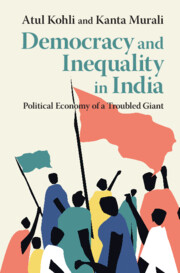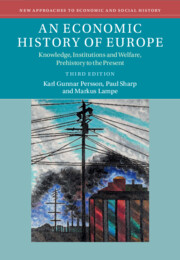Refine search
Actions for selected content:
420 results
Introduction
-
- Book:
- Charity After Empire
- Published online:
- 18 December 2025
- Print publication:
- 31 January 2026, pp 1-26
-
- Chapter
- Export citation

Charity After Empire
- British Humanitarianism, Decolonisation and Development
-
- Published online:
- 18 December 2025
- Print publication:
- 31 January 2026
Financial Innovations in a world with limited commitment: implications for inequality and welfare
-
- Journal:
- Macroeconomic Dynamics / Volume 29 / 2025
- Published online by Cambridge University Press:
- 15 December 2025, e164
-
- Article
-
- You have access
- Open access
- HTML
- Export citation
Shadow banking, implicit guarantees, and risk-taking
-
- Journal:
- Macroeconomic Dynamics / Volume 29 / 2025
- Published online by Cambridge University Press:
- 24 November 2025, e157
-
- Article
- Export citation
How Populists Governed the COVID-19 Pandemic: Populist Governance and Social Policies in Brazil, Hungary, Mexico, Poland, Russia and Turkey
-
- Journal:
- Government and Opposition / Volume 60 / Issue 4 / October 2025
- Published online by Cambridge University Press:
- 14 November 2025, pp. 1313-1335
-
- Article
-
- You have access
- Open access
- HTML
- Export citation
3 - Sentientism
- from Part II - The Direct Approach
-
- Book:
- Animal Economics
- Published online:
- 18 November 2025
- Print publication:
- 13 November 2025, pp 95-108
-
- Chapter
- Export citation
7 - The Welfare State
-
- Book:
- States of Transition
- Published online:
- 31 October 2025
- Print publication:
- 13 November 2025, pp 158-184
-
- Chapter
- Export citation
Low carbon energy transition and digital infrastructure from the Global South: A review
-
- Journal:
- Environment and Development Economics , First View
- Published online by Cambridge University Press:
- 05 November 2025, pp. 1-20
-
- Article
-
- You have access
- Open access
- HTML
- Export citation
Introduction
-
- Book:
- Democracy and Inequality in India
- Published online:
- 11 October 2025
- Print publication:
- 30 October 2025, pp 1-12
-
- Chapter
- Export citation
2 - Politics of Growth and Distribution
- from Part I - Politics at the Apex
-
- Book:
- Democracy and Inequality in India
- Published online:
- 11 October 2025
- Print publication:
- 30 October 2025, pp 64-92
-
- Chapter
- Export citation

Democracy and Inequality in India
- Political Economy of a Troubled Giant
-
- Published online:
- 11 October 2025
- Print publication:
- 30 October 2025
1 - “We Are Not Immune”
-
- Book:
- Risk and Resistance
- Published online:
- 10 September 2025
- Print publication:
- 09 October 2025, pp 9-32
-
- Chapter
- Export citation
2 - Litigating Risk
-
- Book:
- Risk and Resistance
- Published online:
- 10 September 2025
- Print publication:
- 09 October 2025, pp 33-60
-
- Chapter
- Export citation

An Economic History of Europe
- Knowledge, Institutions and Welfare, Prehistory to the Present
-
- Published online:
- 02 October 2025
- Print publication:
- 02 October 2025
-
- Textbook
- Export citation
Conclusion and Epilogue
-
- Book:
- An Economic History of Europe
- Published online:
- 02 October 2025
- Print publication:
- 02 October 2025, pp 275-287
-
- Chapter
- Export citation
Introduction:
-
- Book:
- An Economic History of Europe
- Published online:
- 02 October 2025
- Print publication:
- 02 October 2025, pp 1-14
-
- Chapter
- Export citation
6 - Implications for Effective Policy
-
- Book:
- Building Social Mobility
- Published online:
- 15 September 2025
- Print publication:
- 02 October 2025, pp 147-164
-
- Chapter
- Export citation

Armed Citizens and Citizens in Arms
- The Military and the Creation of the State of Peru, 1800‒1860
-
- Published online:
- 12 September 2025
- Print publication:
- 25 September 2025
Primacy of Property as Devolution of Rights: Case of Women in India through the Lens of Inheritance Laws
-
- Journal:
- Asian Journal of Law and Society / Volume 12 / Issue 3 / September 2025
- Published online by Cambridge University Press:
- 01 August 2025, pp. 308-323
-
- Article
- Export citation
Welfare Subjects and Autopoiesis
-
- Journal:
- Journal of the American Philosophical Association / Volume 11 / Issue 4 / December 2025
- Published online by Cambridge University Press:
- 17 July 2025, pp. 696-714
-
- Article
-
- You have access
- Open access
- HTML
- Export citation
